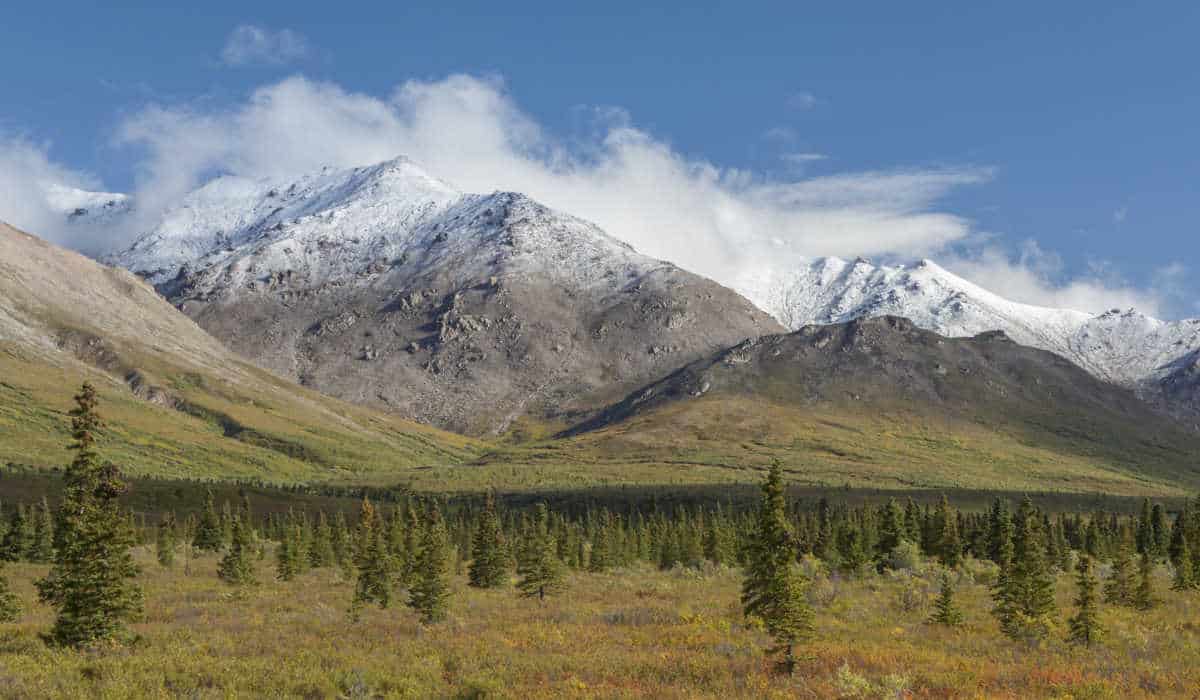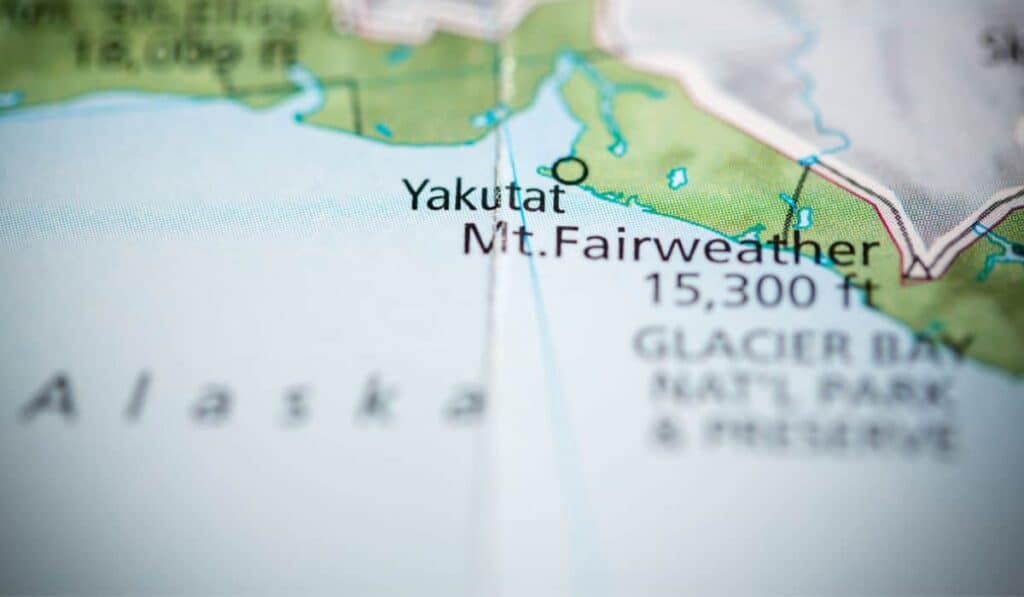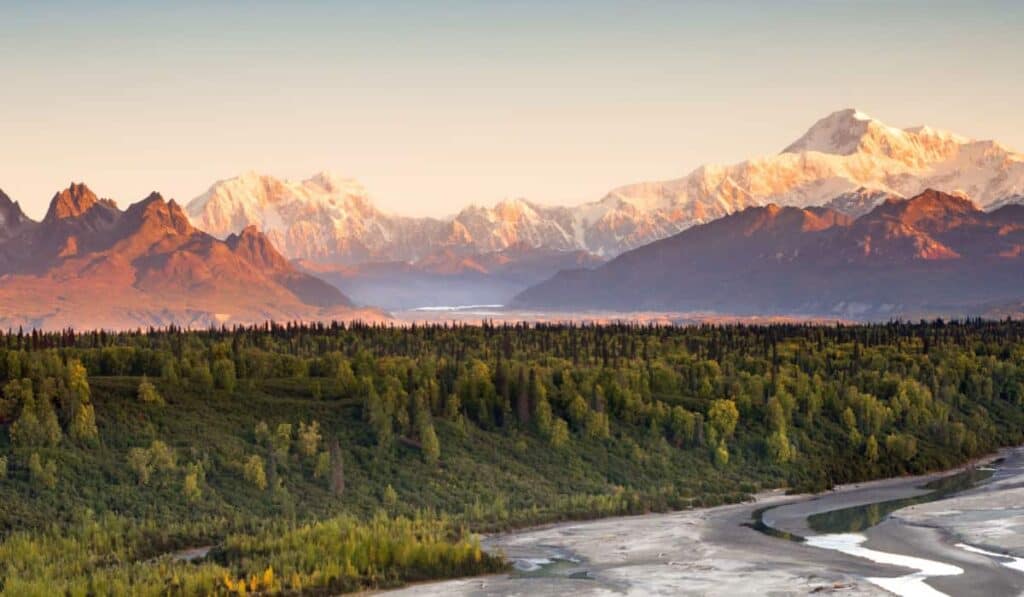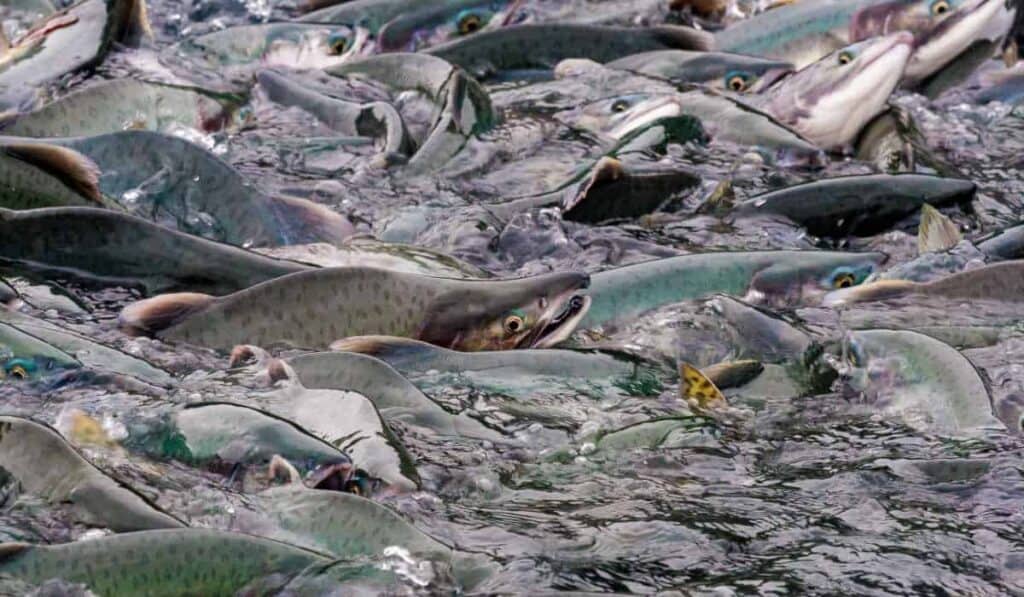If you aren’t an Alaskan, you might not have heard of “termination dust”. Even if you’re from Alaska like me, you might not have heard it until you became an adult.
A few years back, a friend of mine was out of town and sent me a text message asking if I could see any termination dust yet. I had never heard that term before, so I had to ask her to explain.
In my defense, I wasn’t as outdoorsy back then, but now I’m very familiar with it and I can explain what it is and what it means.
What Is Termination Dust?
Termination dust is the term used almost exclusively in Alaska for the earliest new snowfall in a year, specifically, snow on top of mountains.
There are several layers of the Earth’s atmosphere and the lowest (the one we live in) is called the troposphere. In this layer, temperatures get lower and colder the higher the elevation.
Since snow requires a temperature below freezing (32 degrees Fahrenheit or 0 Celsius), it makes sense that the mountaintops will get snow before the cities.
Since the mountains are the first to get snow, it’s reasonable to assume that the summer is drawing to a close and that winter (and snow) will be coming to lower elevations soon.
Where Does The Name Come From?
The “dust” part of the name comes from the fact that the first snow is always light and doesn’t immediately produce large snowcaps. It may not last very long at all, since it’s not hard-packed snow.
The “termination” part comes from the fact that its appearance traditionally signifies the end of the summer. It is a sign that winter is coming soon and preparations must begin.
For workers in the mining industry and other outdoor occupations, seeing termination dust means that it’s time to prepare for winter.
Construction workers and other seasonal employees know that their jobs will be ending soon and their employment will be terminated (hence the name).
How Soon Will The Snow Come?
That’s the beauty of Alaskan weather: nobody knows. The only real answer here is “soon” because it depends on the year. It could be a few days away or a month.
Having a larger or smaller amount of termination dust doesn’t mean that the season will see heavier or lighter snowfall, either. It’s mainly just a sign that snow will be here soon.
Once it appears, though, you can be sure that all of the local skiers and snowboarders will be pulling out their gear from storage and start getting ready for opening day at the local resort.
Exact (Scientific) Definition of Termination Dust
There are some points about termination dust that locals disagree on. Some argue that the snowfall has to reach a certain altitude to count, while others maintain that it’s simply the first visible light snowfall.
In an interview with Alaska’s KTOO broadcasting network, an Anchorage-based climatologist named Brian Brettschneider said he’s come up with several criteria to determine what qualifies as termination dust and what doesn’t.
Brettschneider says the snowfall must be visible from town, it must be at or below 4,000 feet, it must last for at least one-half of a day, and it must be at the beginning of August or later.
I tend to agree with his assessment of the situation, but that opinion isn’t necessarily widespread. People who have lived here a while might have their own ideas as to what counts and what doesn’t.
I hope this has helped you to have a greater understanding of termination dust and I hope you’re lucky enough to see it in person someday!







